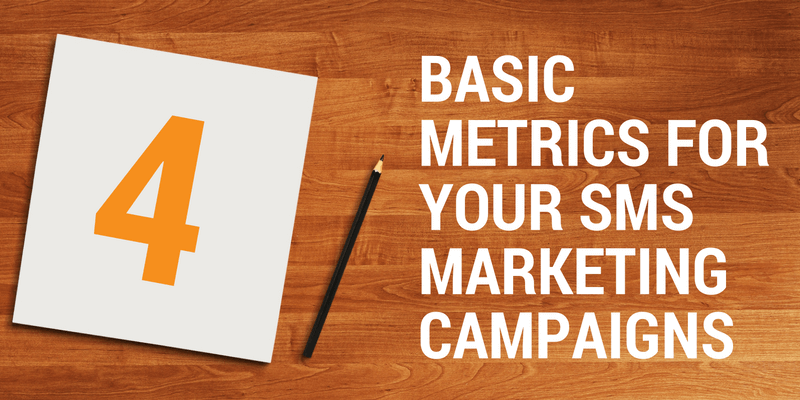Email vs. SMS Revisited

The digital marketing age has really given us so many options when it comes to running campaigns. If you Google “digital marketing channels”, you’ll get article after article about which ones work the best. Of course, most of them won’t completely agree.
One of the most common though, and longest standing, is email. It’s a channel marketers know well, it’s relatively inexpensive, and is easily measurable. But it suffers from the problem of overload. According to The Radicati Group, the average user in 2015 received 122 emails a day. Twelve of those were spam that made it through to their inbox. People just are desensitised to email because there is no time to read them all.
And though SMS messaging has been around for decades, it’s one of the newer forms of digital advertising resulting from the growth in mobile devices. It allows marketers to reach out and directly connect with their customers in a way email can’t. At least for now. People are still hesitant to give out their mobile number unless they have a compelling reason – usually something free or discounted.
Because of email’s issues, some marketers put less emphasis on it and may overlook it in favour of SMS. Even though we’re an SMS provider and would love to have more SMS users, the truth is it shouldn’t be one or the other. The best marketers use both.
"High performing" marketers
In the 2016 State of Marketing report from Salesforce, they divide the marketers into three groups: underperformers, moderate performers, and high performers. High performers are those that self-identify with the statement “extremely satisfied with the current outcomes realized as a direct result of their company’s marketing investment”. What they’re doing is working and they know it.
Moderate performers are just “very or moderately satisfied” with their outcomes. Underperformers are “slightly or not at all satisfied”.
Obviously if you want to see what is working in the marketing space, you’ll want to pay attention to what the high performers are doing. The Salesforce report makes a point of distinguishing which level is obtaining what kind of performance. And that’s where this is all leading… how high performers are using email and SMS.
All about email
These high performing marketers are actually seeing better returns on email than ever before. This is because they are using “Intelligent email”. They personalize emails with names, but also use other data. The report says “Top teams are 4.2x more likely than underperformers to leverage predictive intelligence or data science to create personalized emails”.
This ties into another concept, or process, of high performing marketers: 88% say that they use a “customer journey strategy”. Some marketers call it a “unified customer experience strategy”. Whatever the term used, it means the customer is the focus. The result is, based on the report, satisfied customers and marketers!
What is a unified digital front?
So what exactly is a customer journey or a unified front? Are they just the buzz words of the day or do they carry more meaning? I think they’re both. These terms, and similar ones, are tossed about quite a bit, but not always well defined. It seems in many cases it’s like the old adage about art, “I don’t know much about art, but I know it when I see it” (sometimes ends with “I know what I like” instead). Intuitively we all know what a customer journey should mean, don’t we?
Still, I wanted to put something down a little more concrete than that. I found this quote from tcworld.com that I think begins to capture it, “It’s not enough to dazzle prospects with flashy advertising and sexy marketing collateral. You have to continue to dazzle them by providing amazingly useful, relevant, and accurate content after they become customers. At every touchpoint. On every platform. Every time.”
It’s not just about content though. It includes customer support too. But perhaps that’s included in “every touchpoint”.
Mobile and SMS
All that discussion boils down to what those high performers are doing relative to SMS and mobile in general. The report says 81% percent align their email and mobile campaigns.
This doesn’t mean running the same campaigns on both channels (though it could do that too). It means cross-promoting so the customer recognises all channels the company is on. The report concludes that “With even more marketers reporting significant ROI for mobile, email, and social this year, it’s crucial to orchestrate these channels in support of a seamless customer experience”. It goes on to say, “mobile opt-in, for example, rank[s] in the top five most effective email campaign types.”
Promoting your SMS marketing opt-in via email is highly effective. And it also provides significant ROI. A customer that chooses to opt-in to both email and SMS channels is a very interested customer!
Realising that your customers are going to be interacting with you through mobile and through email gives you the opportunity to start building that unified experience. It’s well worth the effort to do so – you can tell because high performers are 1.8 times more likely to align mobile and email than underperforming teams. Which do you want to be?
Related Articles
4 Basic Metrics for Your SMS Marketing Campaigns
One key to successful marketing is to know when you’re doing it right. And when you’re doing it wrong. The great thing about SMS marketing is you can get that information pretty quickly. But to understand how your messages are performing, you need to do a little maths. Thankfully, it’s all rather simple once you see it.
Why People and Companies Prefer SMS Messaging for Customer Support
People like SMS messaging. They really do. In a variety of surveys and studies, consumers continue to say they like it when companies use SMS to communicate with them. Let's look at some of the data that proves it to be true, and also how to make sure your company is using it correctly for customer support communications.
12 Reasons Mobile Messaging is “A Beautiful Thing”
Beauty is in the eye of the beholder. But could text messaging really be considered beautiful? You might argue that it depends on the messages you get! That’s a valid approach, but I recently found a description of mobile messaging that made me believe it is indeed beautiful, so I thought I’d share it with you.
Proof SMS Messaging Gets Results: Increase Sales
Can SMS marketing increase sales numbers? In the next entry of our Results Series you’ll see the kinds of results that real companies achieved. We’ve rounded up sales numbers and timelines to show you how well, and how fast, SMS marketing can improve your sales.
Proof SMS Messaging Gets Results: Conversions
Consistent double-digit conversion rates are a hallmark of SMS marketing. Is it all because of mobile coupon redemptions, or can it be used for other marketing objectives? We’ve got examples from different industries and objectives so you can decide for yourself in this latest Results Series blog.
3 SMS Marketing Metrics That You Need to Know
SMS marketing is one of the most effective mobile marketing channels available. It’s also one of the easiest to measure your performance for every campaign, even every message. Read the full blog to discover the three of the basic metrics you’ll need to know to evaluate your success.
Why Using SMS for Customer Service is a Good Thing
Customer service is arguably one of the most important parts of any organisation. Happy, loyal customers spend more and ultimately bring you more business through positive comments and referrals. Here's why SMS is crucial to maintaining high levels of support now and for the future.
Email vs. SMS Revisited
The digital marketing age has really given us so many options when it comes to running campaigns. If you Google “digital marketing channels”, you’ll get article after article about which ones work the best. Of course, most of them won’t completely agree. Here we take another look at how email and SMS measure up against each other.
5 Amazing SMS Statistics from Salesforce
Every year Salesforce releases its State of Marketing report. It offers insight into how marketers use and see the various tools and channels available today. In the 2016 report, much of the content focused on social and email, but also included a good deal of information on mobile marketing too.
Proof SMS Messaging Gets Results: Opt-Ins
SMS messaging is one of the most effective mobile marketing channels. The proof is in the data, of course. In this blog post, you’ll discover how many opt ins businesses get, and how quickly they get them once they give SMS messaging a go.











